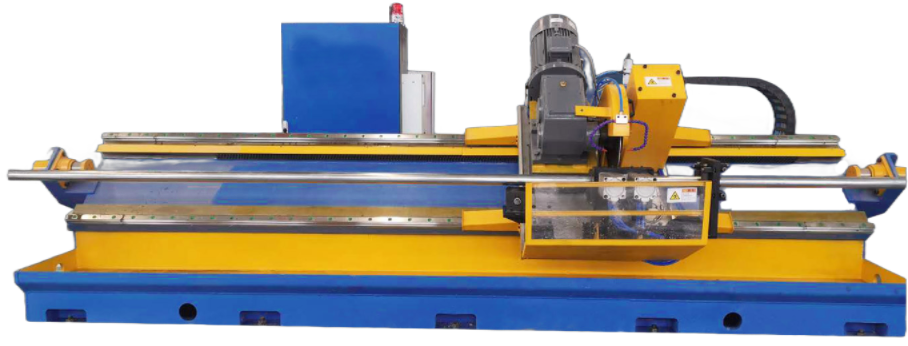steel coil decoiling machine
The Role of Steel Coil Decoiling Machines in the Manufacturing Industry
In the realm of manufacturing, the processing of raw materials is a critical step that can significantly influence the quality of the final product. Among the various types of machinery that facilitate this process, the steel coil decoiling machine stands out as a vital component in the handling and transformation of steel coils into usable formats for various applications. Understanding its functions, benefits, and the technology behind it provides insights into the essential role it plays in modern manufacturing operations.
Understanding Steel Coil Decoiling Machines
As the name suggests, a steel coil decoiling machine is designed to unwind or decoiling steel coils. These coils are typically produced during the steel-making process and come in various sizes and thicknesses. The decoiler's primary function is to feed the steel strip into subsequent processing machines, such as shears, presses, or roll formers, while maintaining tension and ensuring smooth operation.
The decoiling process is crucial as it directly affects the efficiency and output quality of downstream processes. Poorly managed decoiling can lead to material damage, such as kinks and bends, which can compromise the integrity of the final products. Thus, the design and functionality of these machines are pivotal in maintaining material quality.
Key Features of Decoiling Machines
Modern steel coil decoilers come equipped with several advanced features to optimize performance. Firstly, they utilize automatic feeding systems that control the strip's tension to prevent slack or overstretching during the decoiling process. This automatic tension control mechanism is vital, as it ensures uniform feeding rates and prevents material defects.
Additionally, high-quality decoiling machines incorporate sensors and feedback systems that allow for real-time monitoring of the decoiling operation. This technology helps in identifying any discrepancies in the process, enabling prompt adjustments to avoid costly disruptions. Furthermore, the use of servo motors enhances the precision and reliability of the decoiling operation, ensuring that the output meets specific processing requirements.
steel coil decoiling machine

Benefits of Using Steel Coil Decoiling Machines
The implementation of steel coil decoiling machines brings numerous benefits to manufacturers. Firstly, these machines significantly enhance productivity. By automating the decoiling process, manufacturers can reduce manual labor, minimize inaccuracies, and speed up production lines. This efficiency can lead to substantial cost savings and increased output, which are vital in today’s competitive markets.
Secondly, improving the quality of the end products is another primary benefit. Decoiling machines that maintain precise tension and allow for controlled feeding reduce the likelihood of defects. Higher quality outputs not only fulfill customer expectations but also bolster a company’s reputation in the industry.
Moreover, the versatility of steel coil decoiling machines allows for processing a variety of steel types and thicknesses. This adaptability is essential for manufacturers that deal with multiple products or customized orders, enabling them to respond quickly to changes in demand without overhauling their entire production line.
Conclusion
In conclusion, steel coil decoiling machines are indispensable tools in the steel processing industry. Their ability to efficiently and effectively unwind steel coils while ensuring high-quality outputs underscores their importance in manufacturing operations. As technology continues to evolve, the enhancements in decoiling machine design and functionality promise even greater efficiency and reliability in the future.
Investing in a high-quality steel coil decoiling machine is a strategic decision for manufacturers looking to improve their operational efficiency and product quality. As industries continue to grow and adapt to new challenges, having robust machinery that can streamline processes and maintain high standards is paramount to success in the manufacturing landscape. Whether in automotive, construction, or any field relying on steel, these machines will remain a cornerstone of efficient production practices, ensuring that the industry meets the demands of tomorrow.
-
High Frequency Straight Seam Welded Pipe Production Line-BzZhou Xinghua Machinery Equipment Manufacturing Co., LTD.|Precision Engineering&CustomizationNewsJul.29,2025
-
High-Frequency Straight Seam Welded Pipe Production Line-BzZhou Xinghua Machinery Equipment Manufacturing Co.,LTD.|Line Pipe Steel&Welded Gas PipeNewsJul.29,2025
-
High Frequency Straight Seam Welded Pipe Production Line - BzZhou Xinghua|Steel Pipe Manufacturing, High-Frequency WeldingNewsJul.29,2025
-
Precision Flying Saw & Shear Machines | High-Speed CuttingNewsJul.25,2025
-
Welded Pipe Production Line - BzZhou Xinghua Machinery Equipment Manufacturing Co., LTD.|High-Frequency Straight Seam Welding&Precision EngineeringNewsJul.22,2025
-
Welded Pipe Production Line - BzZhou Xinghua Machinery|High-Efficiency, Precision EngineeringNewsJul.21,2025


